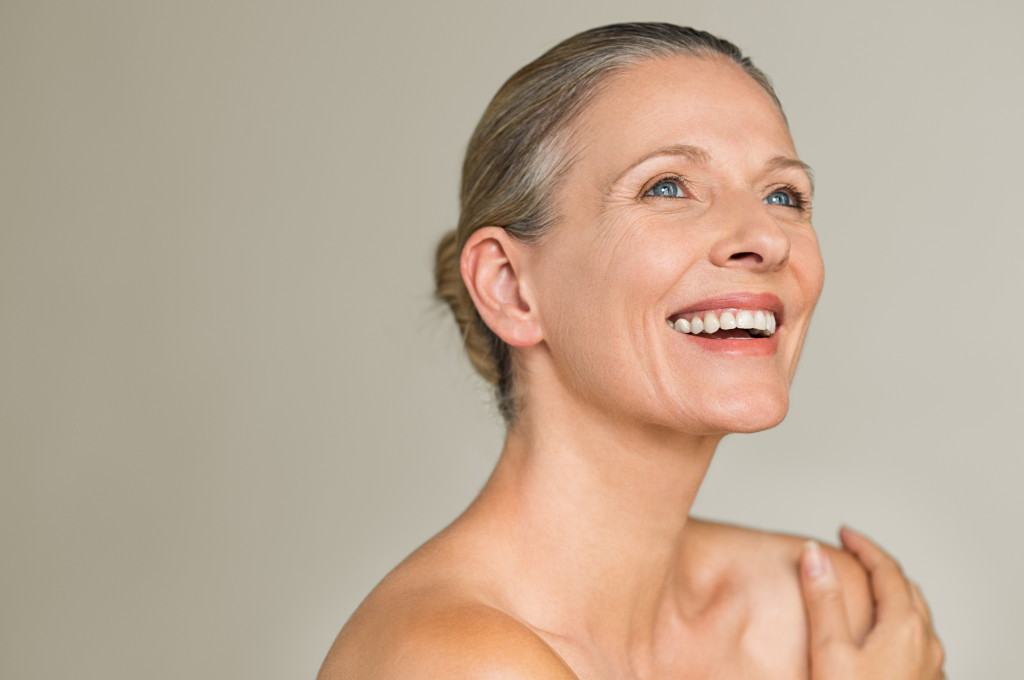Sun can damage your skin. But did you know there’s a specific type of damage caused by exposure to ultraviolet (UV) light? It’s called photo-aging, and it’s a significant reason why it’s so important to wear sunscreen every day, even when it’s cloudy. Here’s what you need to know about photo-aging and how it can affect your skin.
What is Photo-Aging?
Photo-aging is damage to the skin that’s caused by exposure to UV light. This damage manifests itself in the form of wrinkles, fine lines, age spots, and dryness. In other words, photo-aging accelerates the aging process , making you look older than you are. And unfortunately, once this damage is done, it’s permanent. That’s why protecting your skin from UV rays daily is essential.
How Does Photo-Aging Happen?
When UV light penetrates the outer layer of your skin (the epidermis), it causes changes in the collagen and elastin fibers that make up the middle layer of your skin (the dermis). These changes cause the skin to become thinner, less elastic, and more fragile. As a result, wrinkles and fine lines start to form.
In addition to causing changes in the collagen and elastin fibers, exposure to UV light also triggers the production of melanin (the pigment that gives skin its color). This increase in melanin can lead to age spots or hyperpigmentation.
Finally, UV light damages the cells that produce sebum—the natural oil that keeps your skin hydrated. When these cells are damaged, they have less sebum, which leads to dryness.
Diseases Caused By Photo-Aging
Photo aging has also been known to cause various diseases. Here are the five most common diseases caused by it.
Skin Cancer
One in five Americans is likely to get skin cancer in their lifetime, and UV exposure is the leading cause of skin cancer. Although this kind of cancer might not be the most dangerous, there are still about 9,500 skin cancer deaths yearly.
Actinic Keratosis
Actinic keratosis is a precancerous condition in which rough, scaly patches form on the skin. It’s commonly found in areas with prolonged sun exposure, such as the face, ears, neck, scalp, forearms, and backs of the hands.

Solar Lentigines
Also known as age spots or liver spots, solar lentigines are dark patches on the skin that occur due to excessive sun exposure. These spots are common in older adults and typically found in areas frequently exposed to the sun, such as the face, arms, and hands.
Solar Elastosis
This condition causes thickening and yellowing of the skin and the formation of wrinkles and creases. It’s often seen on areas with frequent sun exposure, like the face, neck, chest, and back of the hands.
Telangiectasia
Telangiectasia is a condition in which small blood vessels near the skin’s surface become widened, resulting in the appearance of red lines or patches on the skin. It’s often found in areas with frequent sun exposure, like the face, chest, arms, and hands.
How Can I Prevent Photo-Aging?
There are various ways you can prevent photo-aging. Here are the five most common ways you can avoid it.
Tinted Windows
Being inside your car doesn’t mean you are safe from photo-aging. That’s why you must tint your car windows. Doing this can reduce UV exposure by up to 60%. This is essential if you’re someone who spends a lot outside. If you don’t know how to do it yourself, consider hiring a local auto window tinting service . They’ll know the right tint and how to apply it properly to your car.
Sunscreen
Wearing sunscreen every day is one of the best ways to prevent photo-aging. Make sure to use sunscreen with broad-spectrum protection and an SPF of 30 or higher, and apply it for at least 15 minutes before going out in the sun. Reapply every two hours or more often if you’re sweating or swimming.
Protective Clothing
Wearing protective clothing, such as long sleeves and wide-brimmed hats, can also help protect your skin from sun damage.
Avoid Midday Sun
Avoid being outside during the hottest part of the day, usually between 10 am and 4 pm. If you need to be outside during this time, take extra precautions, like wearing a hat and sunscreen.
Stay in the Shade
Try to stay in shaded areas instead of directly under the sun whenever possible. This will reduce your UV exposure and help prevent photo-aging.
Photo-aging is a type of damage that’s caused by exposure to UV light. This damage manifests itself in the form of wrinkles, fine lines, age spots, and dryness. Thankfully, there are ways to prevent it. Taking these precautions can help keep your skin looking youthful for longer.

